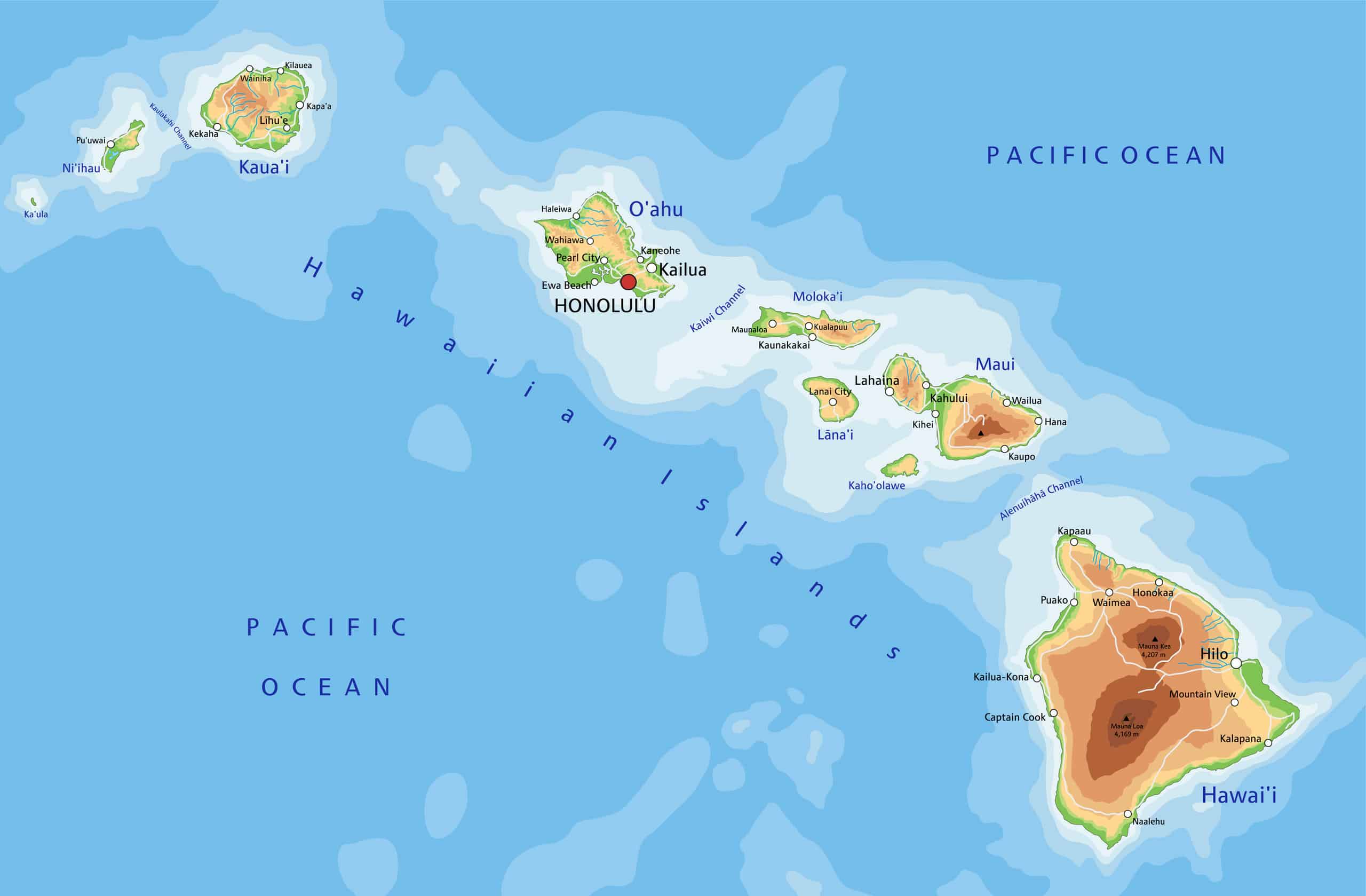The Hawaiian Islands are an archipelago chain that makes up the state of Hawaii. You may think that because it’s a state, there isn’t much distance between each island. The whopping fact is that isn’t true. The islands extended a total of 1,500 miles! That’s wild, isn’t it?
When you go visit Hawaii, there’s so much to do because there are so many islands. There is so much allure in every island that you can’t just do it all in one visit. Unless you go for months at a time, you are going to have to come back again to explore its beauty in its entirety.
But for now, we’ll give you a rundown of each of the eight major Hawaiian islands, a brief history of Hawaii, and how close and far all the islands are from one another.
Hawaiian Islands
Eight major Hawaiian islands make up the state of Hawaii. Let’s highlight them and then dive in for a closer look at each.
| Island | Nickname | Population | Flower | Color |
|---|---|---|---|---|
| Hawaii | The Big Island | 200,629 | Red Pua Lehua | Red |
| Maui | The Valley Isle | 164,221 | Lokelani | Pink |
| Oahu | The Gathering Place | 1,016,508 | Yellow ilima | Yellow |
| Kauai | The Garden Isle | 73,298 | Mokihana | Purple |
| Molokai | The Friendly Isle | 7,345 | Kukui | Green |
| Lanai | The Pineapple Isle | 3,367 | Kaunaoa | Orange |
| Niihau | The Forbidden Isle | 84 | White shell | White |
| Kahoolawe | The Target Isle | 0 | Hinahina kū kahakai | Gray |
Hawaii
Hawaii is the largest island in the Hawaiian island chain. The most populated town is Hilo. After Captain James Cook became the first European to arrive in Hawaii in 1778, there were tensions between the Hawaiians and Cook’s crew. He was killed in February 1779 in a dramatic scene on the beach.
Maui
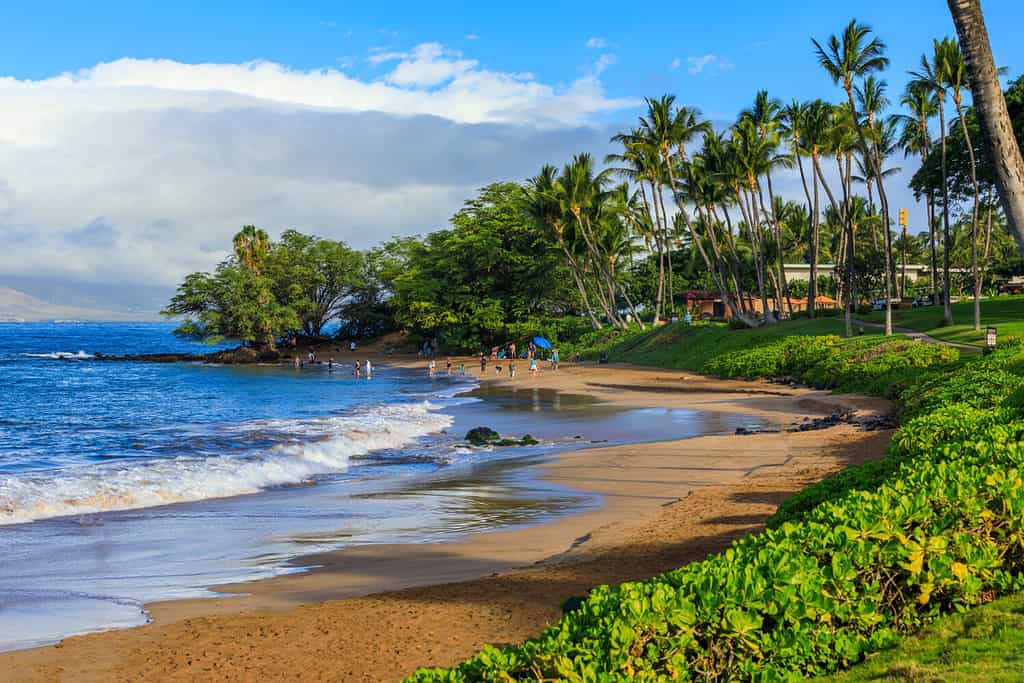
Approximately 10,000 humpback whales migrate to Maui every year.
©Elena_Suvorova/Shutterstock.com
Maui is the second biggest island in the chain. It is also one of the most popular islands in terms of tourism. Travelers come from all over the world to hit Maui’s beaches and surf. In August 2023, wildfires broke out, destroying entire towns and causing mass devastation.
Oahu
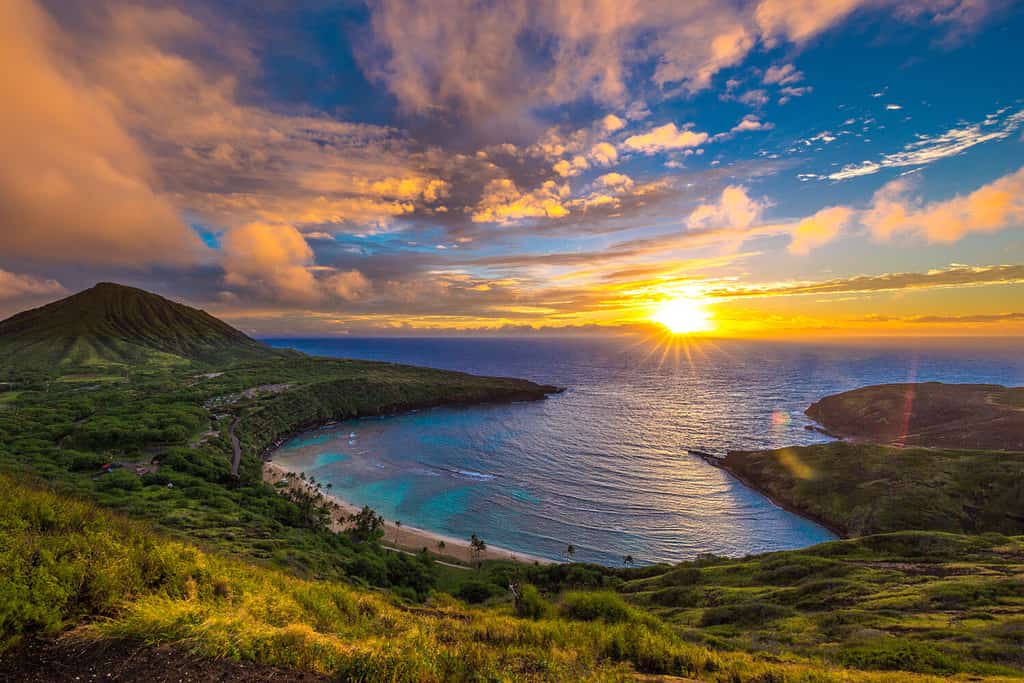
The only palace in the United States, Iolani Palace, is located on the island of Oahu.
©Shane Myers Photography/Shutterstock.com
Oahu is the most populated island in Hawaii and where the capital of Hawaii is located. There are many activities for tourists on Oahu, as well. On December 7, 1941, the Pearl Harbor naval base was attacked by the Japanese Empire, forcing the United States to enter World War II.
Kauai
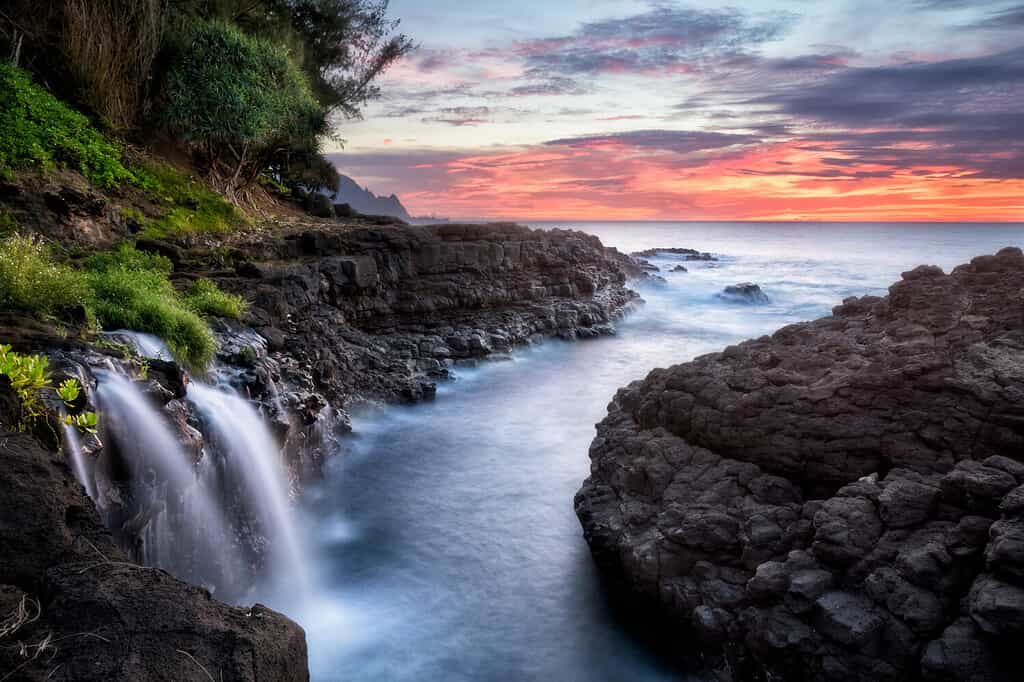
Captain James Cook landed in Waimea, on the west side of the island of Kauai.
©Adam Springer/Shutterstock.com
The fourth largest Hawaiian island, Kauai is a tropical and humid island. The land in Kauai is quite fertile and many crops grow there including coffee, guava, mango, banana, pineapple, and more.
Molokai
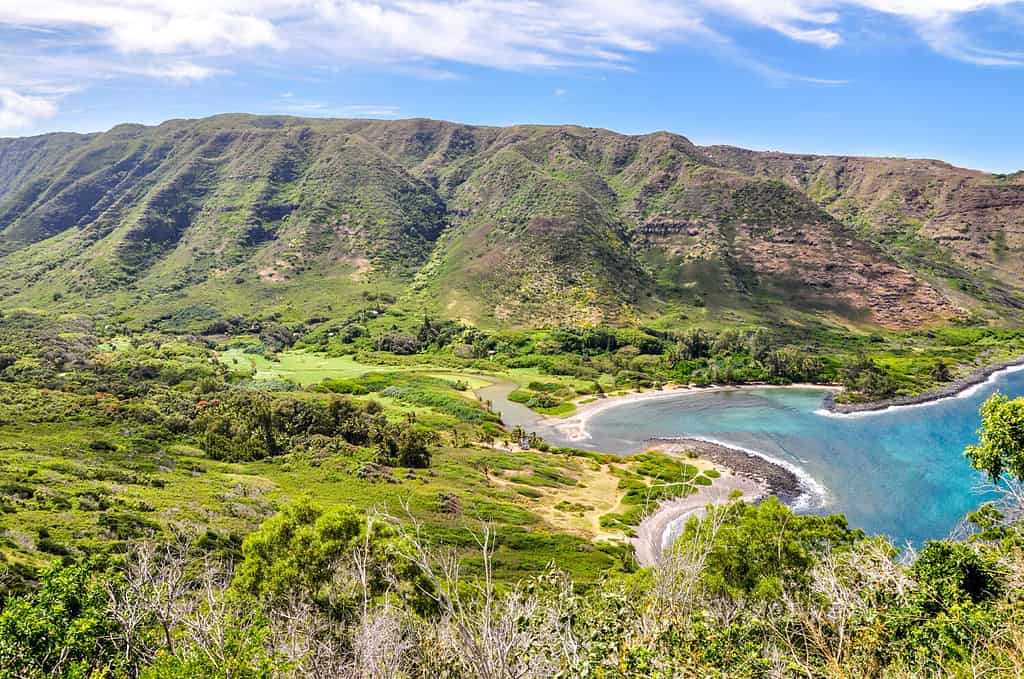
There used to be a leprosy colony on Molokai.
©Juergen_Wallstabe/Shutterstock.com
Although Molokai is a separate island, it is jurisdictionally part of Maui County. It is small in population, but it is said that its people are the friendliest.
Lanai

Most of Lanai is uninhabited and underdeveloped, and there is no public transportation on the island.
©Russell deJetley/Shutterstock.com
Lanai is known as the “Pineapple Isle” because at one point it had the world’s largest pineapple plantation. Now, billionaire Larry Ellison owns 98% of the island, in which he has built several resorts for visitors. It was said that Lanai used to be haunted, but the chief drove them away and it became a peaceful island.
Niihau
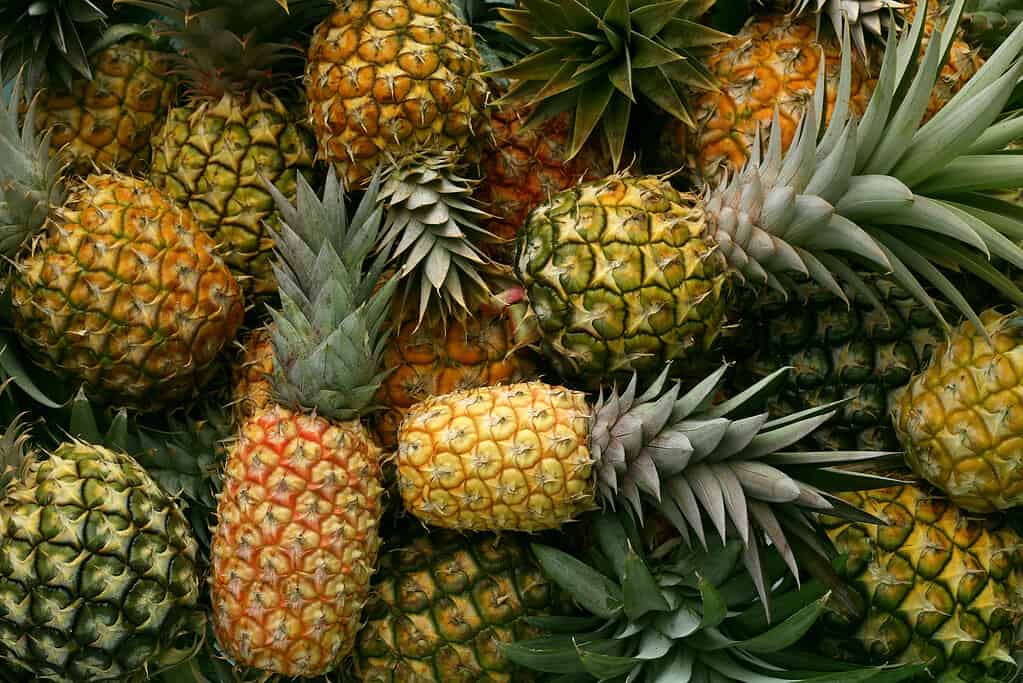
Unlike the other Hawaiian islands, Niihau doesn’t get much rain and so it has a semi-arid climate.
©Shulevskyy Volodymyr/Shutterstock.com
The island of Niihau is closed to the public. Back in the 1860s, a Scottish landowner bought the island and it has stayed in her family for generations. The island is now only used as a residence for the Robinson family and any governmental affairs conducted on Niihau.
Kahoolawe
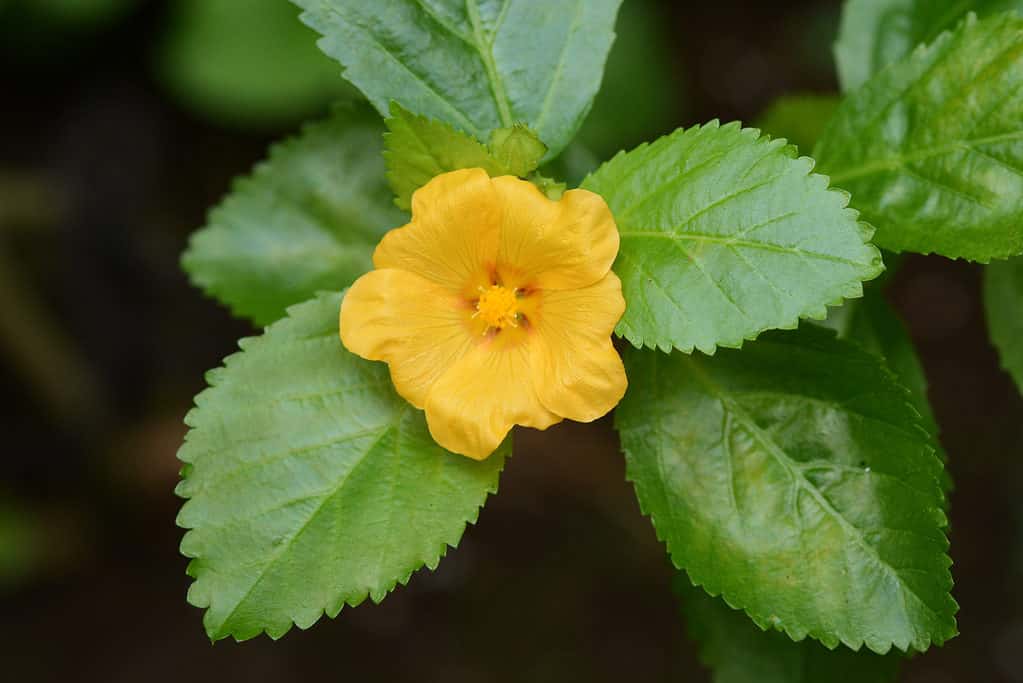
Kahoolawe is the only major Hawaiian island that presently has no inhabitants.
©tamu1500/Shutterstock.com
This island is the smallest in Hawaii and one of the driest, as well. Polynesians at one time inhabited the island. However, the Hawaiian government banned settling on Kahoolawe. The lack of fresh water had always been a factor and now the island is only used for Hawaiian spiritual and cultural events.
How Far Apart Are the Hawaiian Islands?
As the longest island chain in the world, they span a total of 1,523 miles. The closest islands in distance are Molokai and Maui, which are 7.5 miles apart. Lanai and Maui are 8 miles apart. The furthest distance between islands is 305 miles between Kauai and Hawaii. However, if planning a vacation and you want to go to Oahu, Maui, and Hawaii, the distances are not as far. Hawaii and Maui are 100 miles apart, and Hawaii and Oahu are 237 miles apart.
But the question is, how do you travel between islands? Although you can travel by boat, the easiest way is to fly between islands. You may be able to get boats or ferries between the closest islands. Another popular option is booking an inter-island cruise, which will take you to many of the islands of Hawaii.
Travel Tip: When considering traveling between islands during your visit, you have to keep in mind travel expenses and time management.
Hawaii’s History
Hawaii is one of only two states in the United States that was a separate country at one point in history. Hawaii was a kingdom since 1795 when King Kamehameha ruled over all the Hawaiian islands. British Captain James Cook was the first European to arrive in Hawaii in 1778, and the first European to witness surfing. European settlers used to call Hawaii the Sandwich Islands. However European and American stakeholders were always interested in the landmine of riches — the land and the natural resources. In 1893, with the support of the American government, several wealthy residents illegally overthrew the monarchy. At the time, Hawaii’s monarch was Queen Liliuokalani.
For the next five years, Hawaii was the Republic of Hawaii, however, in 1898, the United States officially annexed Hawaii as a territory. Eventually, it became the 50th state admitted to the union on August 21, 1959.
Fun Facts About the Hawaiian Islands
- Mauna Kea, a mountain on the Big Island of Hawaii, is the tallest peak in the world.
- Because of how far Hawaii is from the continental US, the closest major city to Hawaii is San Francisco, which is 2,400 miles away.
- Mount Waialeale, a mountain on the island of Kauai, is the wettest place in the world. It gets more than 450 inches of rain in a year.
- Captain James Cook was the first European to witness surfing on the island of Hawaii in 1778.
- You can say, “Aloha,” for hello and goodbye.
- There are only 12 letters in the Hawaiian alphabet: A, E, H, I, K, L, M, N, O, P, U, W
Closing Thoughts
Spanning 1,500 miles, the Hawaiian islands are an incredible gift from nature. Tropical forests, active volcanoes, sandy beaches, giant, green mountains — and that’s only some of the things that make up Hawaii. There are also friendly people, a captivating history, and a rich culture that truly encapsulates what is the state of Hawaii and each of its 125 islands.
If you get the chance to visit Hawaii, you will see the beauty of each of the major islands and experience breathtaking views every single day. Get a notebook and create a spreadsheet of must-sees and must-dos. You won’t want to miss a thing! Once you arrive, wear a lei and do as Hawaiians do, hug everyone! Aloha!
Thank you for reading! Have some feedback for us? Contact the AZ Animals editorial team.

